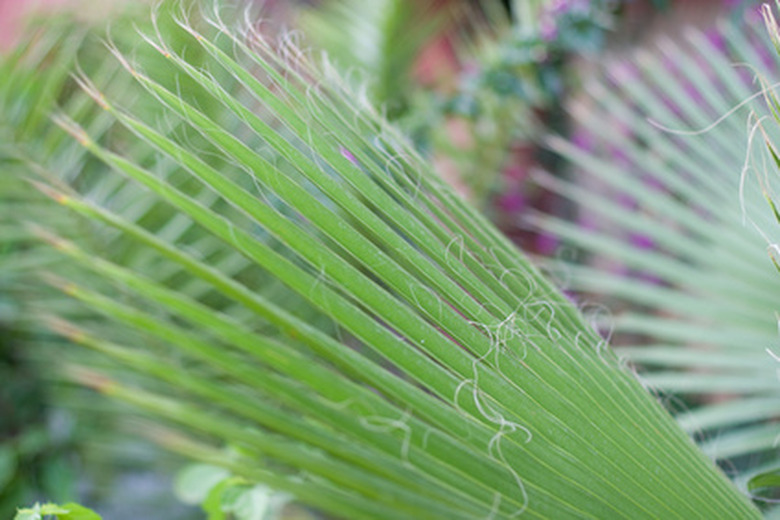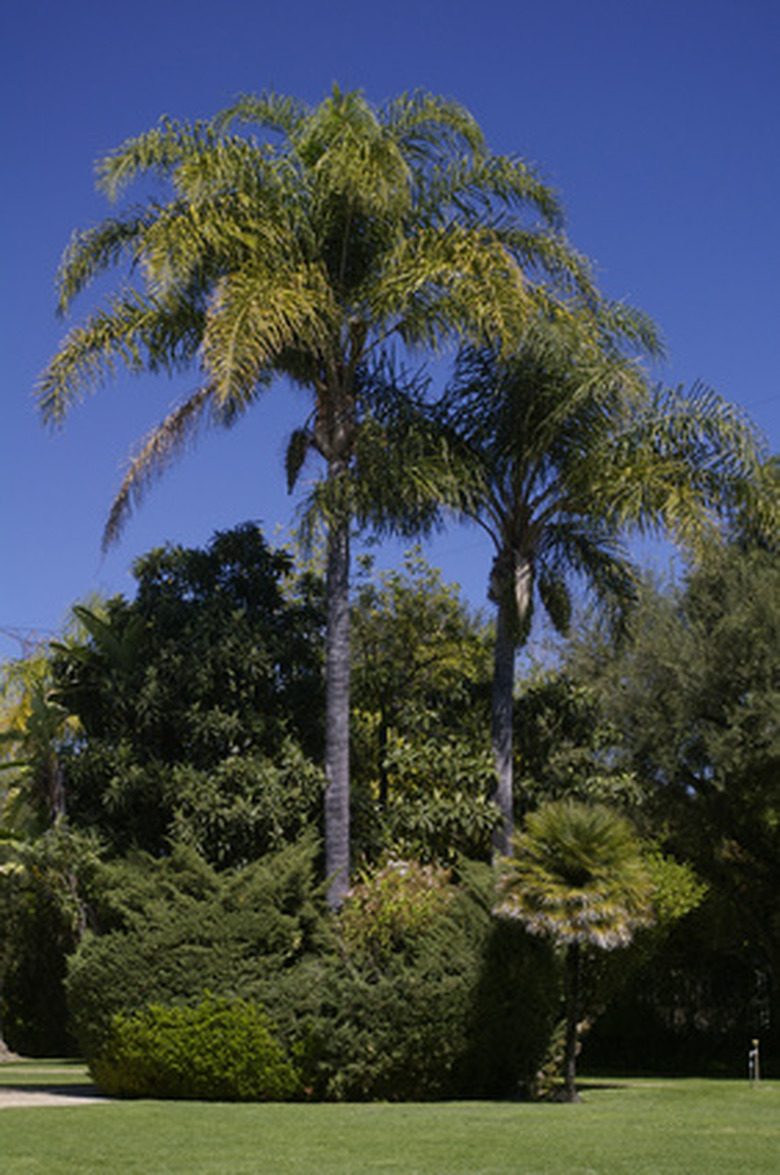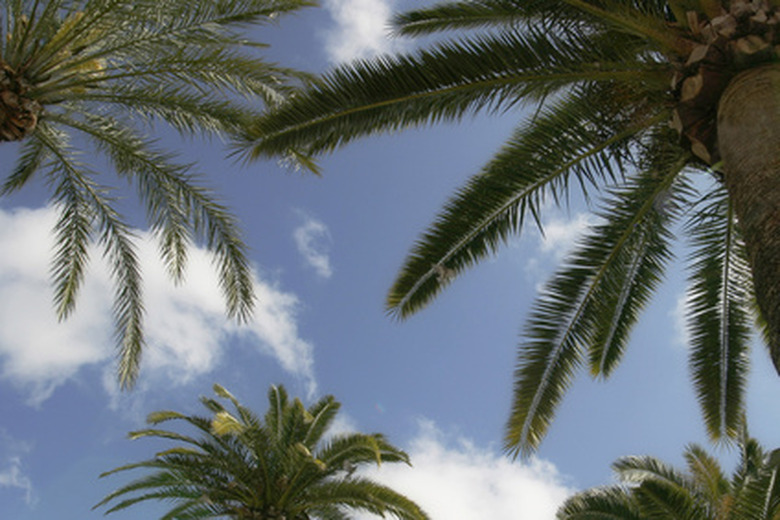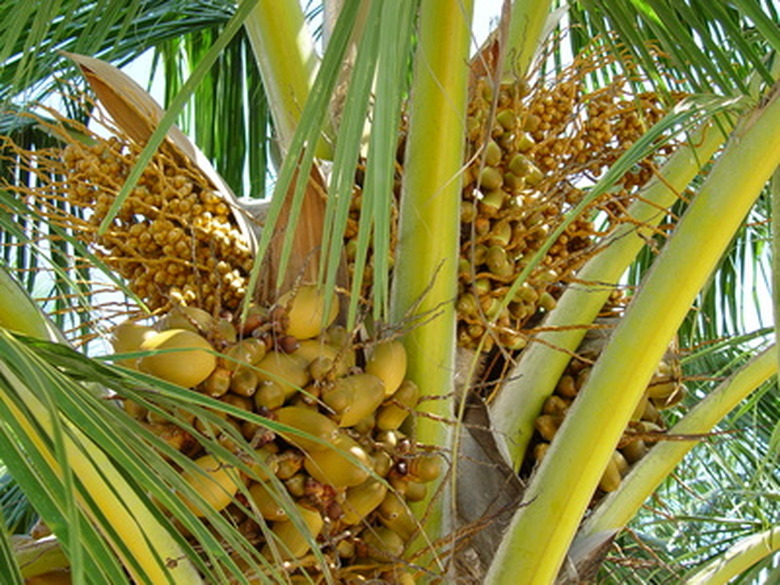Palm Tree Vs. Coconut Tree
The palm tree (Palmaceae) contains more than 3,000 species in more than 230 families in the world, as of August 2010. The species found in the United States are mainly limited to southern California and Florida. Coconut palms fall within the species of palm trees, but have different characteristics that put them as the only member of the Cocos genus of palms.
Leaf Types
Palm trees are mainly identified by leaf shape. The palmate shape is fanlike and the pinnate has a feather shape. The palmate leaf structure has sections that begin from a single point. Pinnate leaves grow along the side of a central axis. The arrangement of leaves is at long intervals along the stem or in clusters at the end of the stem. The size of the leaves vary with each species, with the largest leaves measured in tens of feet.
- The palm tree (Palmaceae) contains more than 3,000 species in more than 230 families in the world, as of August 2010.
- The arrangement of leaves is at long intervals along the stem or in clusters at the end of the stem.
Stems
The typical stem of a palm tree is very tall, erect, unbranched and shaped like a cylinder. Stems can be smooth or rough, covered by such things as remnants of former leaves or scars. The diameter of the stem also varies depending on the species. The trunks of palm trees are very hard, but the internal structure isn't very different from that of other stemmed trees.
Flowers and Fruit
Palm trees produce flowers. They are small and green. Flowers of both sexes can be produced on one tree, though palms are generally unisexual. Pollen is usually carried by the wind or insects from the female flowers. Palm trees also produce fruit. The fruit varies in size and shape. Some are a kind of berry that encases the hard seed, some fruits are hard and pointed and the other kind of fruit is the coconut.
- The typical stem of a palm tree is very tall, erect, unbranched and shaped like a cylinder.
- The trunks of palm trees are very hard, but the internal structure isn't very different from that of other stemmed trees.
Coconut Palms
The coconut palm (cocos nucifera) is commonly called the coconut palm or the coco palm. It has a smooth, leaning trunk that grows 80 to 100 feet with pinnate leaves. The male and female flowers are yellow and born on the same tree. A 4- to 5-year-old tree begins to grow the coconut. The nuts reach full size in about six months, but take a year to reach maturity. Each tree is capable of producing 25 nuts a year.
The Coconut
The "nutmeat" of a coconut is hard, white, and very nutritious. Foods and products can be made from the coconut. Coconut water is the fluid inside the immature nuts. It is clear and contains sugar, vitamins, and minerals. Coconut milk is the white liquid crushed from the nutmeat. It's rich in oils and nutrients and is used in sauces and other foods. Coconut oil is removed from the dried nutmeat. It's semisolid and tasteless, but edible. It's also used in products such as soaps, candy, candles, tooth paste and insecticides.
- The coconut palm (cocos nucifera) is commonly called the coconut palm or the coco palm.
- The "nutmeat" of a coconut is hard, white, and very nutritious.





